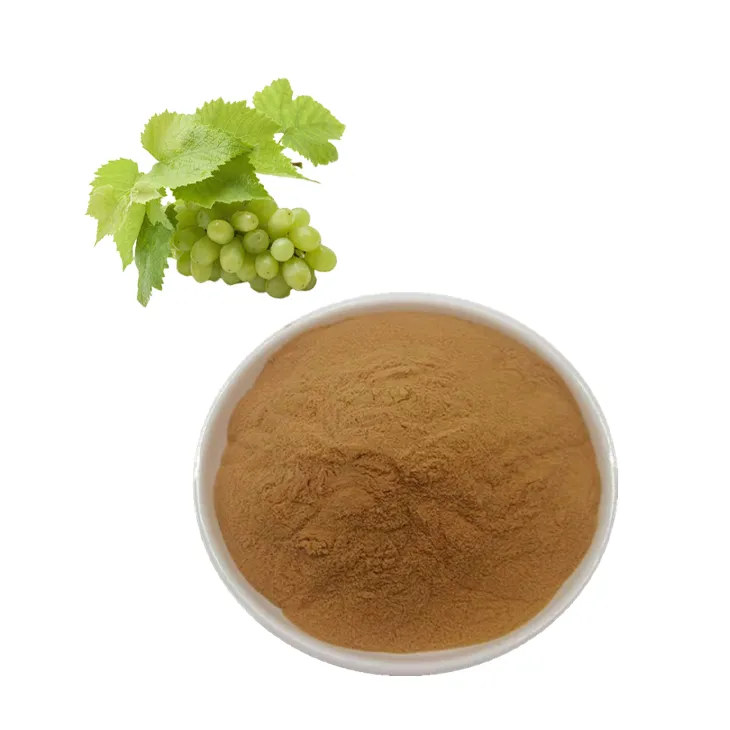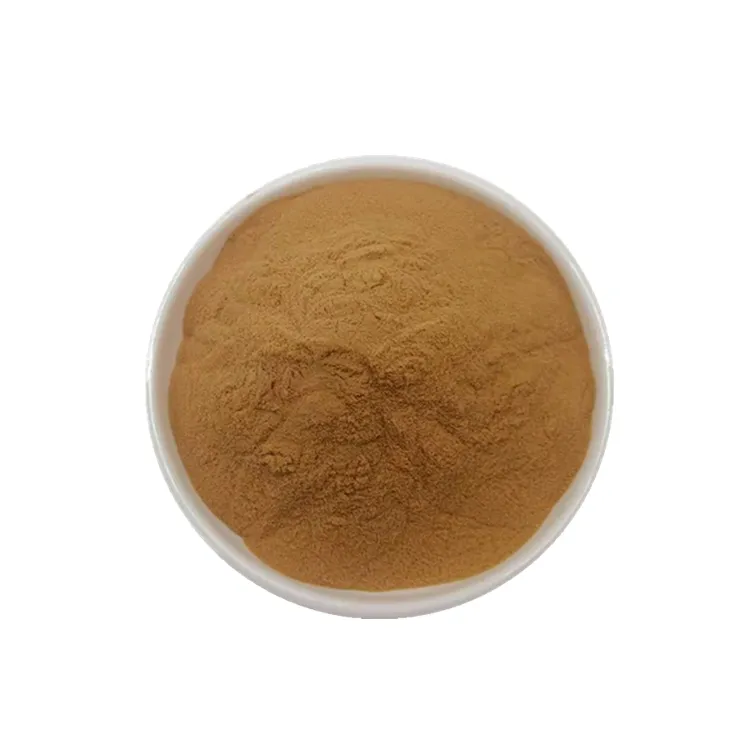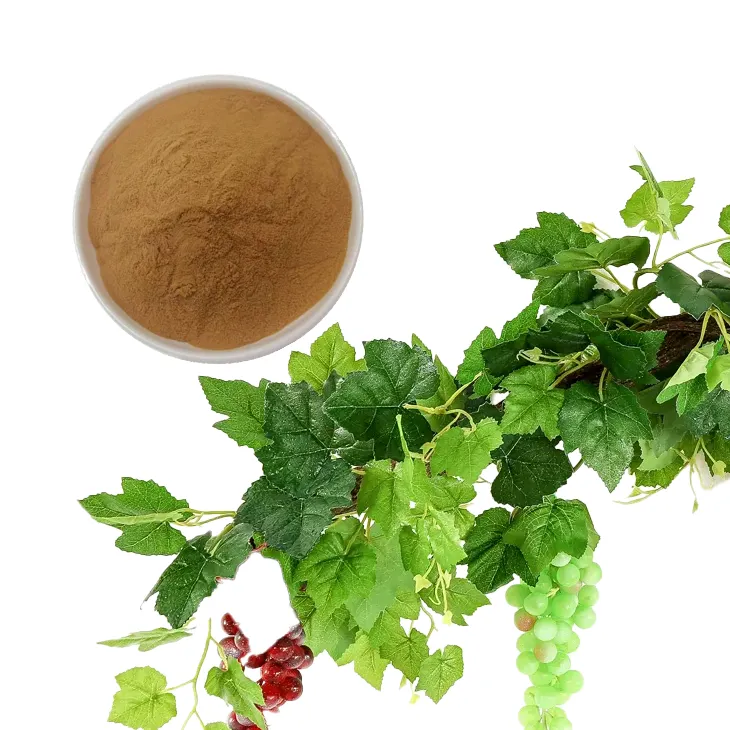- 0086-571-85302990
- sales@greenskybio.com
Optimal Bioavailability of Grape Leaf Extracts.
2024-11-30

1. Introduction
Grape Leaf Extract has gained significant attention in recent years due to its potential health benefits. It is rich in various bioactive compounds such as polyphenols, flavonoids, and resveratrol. However, the effectiveness of these compounds in the body depends on their bioavailability. Bioavailability refers to the proportion of a substance that enters the circulation and is available at the site of action. Maximizing the bioavailability of Grape Leaf Extract is crucial for obtaining the best health - related outcomes.

2. Factors Affecting Bioavailability
2.1 Formulation
The way Grape Leaf Extract is formulated can significantly impact its bioavailability. Different formulations may include capsules, tablets, liquid extracts, or powders. For example, liquid extracts may have a higher bioavailability compared to solid forms. This could be because liquid formulations are more easily digested and absorbed in the gastrointestinal tract. Capsules may protect the extract from degradation in the stomach, but their dissolution rate can affect how quickly the active compounds are released and absorbed. Tablets, on the other hand, may need to be formulated with appropriate disintegrants to ensure proper breakdown and absorption. Additionally, the addition of certain excipients such as surfactants can enhance the solubility of the bioactive compounds in the extract, thereby increasing their bioavailability.
2.2 Consumption Patterns
- Timing of Consumption: The time at which grape leaf extract is consumed can play a role in its bioavailability. For instance, taking it on an empty stomach may lead to faster absorption as there is less food to interfere with the absorption process. However, some individuals may experience gastrointestinal discomfort when taking it on an empty stomach. In such cases, consuming it with a small amount of food may be a better option. Foods that are high in fat can enhance the absorption of lipophilic compounds present in the grape leaf extract. So, pairing the extract with a healthy source of fat, like a small amount of nuts or avocado, might increase bioavailability.
- Dosage and Frequency: The appropriate dosage and frequency of consumption are also important factors. A higher dosage does not necessarily mean better bioavailability. There may be an optimal dosage range beyond which the body may not be able to absorb the additional amount of the extract effectively. Moreover, the frequency of consumption can affect the build - up of the bioactive compounds in the body. For example, taking the extract in smaller, more frequent doses throughout the day may maintain a more consistent level of the compounds in the bloodstream compared to a single large dose.
2.3 Individual Physiological Differences
- Age: Age can have an impact on the bioavailability of grape leaf extract. Older individuals may have a reduced digestive and absorptive capacity compared to younger adults. This could be due to a decrease in the production of digestive enzymes, changes in the gut microbiota, or a decline in the integrity of the intestinal barrier. As a result, the bioactive compounds in the grape leaf extract may not be absorbed as efficiently in older individuals.
- Gender: There may be gender - based differences in bioavailability. Hormonal differences between males and females can influence the metabolism and absorption of the compounds in the extract. For example, female hormones may affect the activity of certain enzymes involved in the metabolism of the bioactive compounds, which in turn can impact their bioavailability.
- Genetic Factors: Genetic variation among individuals can also play a role. Some people may have genetic polymorphisms in genes encoding for enzymes involved in the absorption, metabolism, or transport of the bioactive compounds in the grape leaf extract. These genetic differences can lead to variations in the way the body processes and utilizes the extract.

3. Strategies for Maximizing Bioavailability
3.1 Optimizing Formulation
- Research into novel formulation techniques is essential. For example, nano - formulation of grape leaf extract can increase its bioavailability. Nano - particles can enhance the solubility and permeability of the bioactive compounds, allowing them to be more easily absorbed by the body. This is because nano - particles have a small size, which can improve their interaction with the intestinal cells and facilitate their uptake.
- Combining grape leaf extract with other substances in the formulation can also be beneficial. For instance, pairing it with vitamin C can enhance the antioxidant activity of the extract and may also improve the absorption of certain bioactive compounds. Vitamin C can act as a co - factor in some enzymatic reactions involved in the absorption process.
3.2 Tailoring Consumption to Individual Needs
- Given the influence of individual physiological differences, personalized approaches to consumption are recommended. This may involve consulting a healthcare professional to determine the best time, dosage, and frequency of taking grape leaf extract based on one's age, gender, and overall health status.
- For older individuals, a more easily digestible form of the extract may be preferred, along with a lower initial dosage to assess tolerance. In the case of gender - based differences, women may need to be more aware of how hormonal changes throughout their menstrual cycle or during menopause can affect the absorption of the extract and adjust their consumption accordingly.
3.3 Considering the Overall Diet
- A balanced diet can support the bioavailability of grape leaf extract. As mentioned earlier, consuming the extract with foods high in fat can enhance the absorption of lipophilic compounds. However, it is important to maintain a healthy balance of fats, proteins, and carbohydrates in the diet. A diet rich in fiber can also have an impact. High - fiber foods can slow down the absorption process, but they can also help in maintaining a healthy gut microbiota, which in turn can influence the overall absorption and utilization of the bioactive compounds in the extract.
- Consuming a variety of fruits and vegetables along with grape leaf extract can provide additional antioxidants and nutrients that may interact synergistically with the compounds in the extract. For example, the presence of other polyphenol - rich foods can enhance the antioxidant and anti - inflammatory effects of the grape leaf extract.

4. Conclusion
Maximizing the bioavailability of grape leaf extract is a complex process that involves considering multiple factors. The formulation of the extract, consumption patterns, and individual physiological differences all play important roles. By optimizing the formulation, tailoring consumption to individual needs, and considering the overall diet, it is possible to achieve the best results from this natural extract. Further research is still needed to fully understand the mechanisms underlying the bioavailability of grape leaf extract and to develop more effective strategies for enhancing it. However, the current knowledge provides a valuable starting point for those interested in reaping the potential health benefits of grape leaf extract.
FAQ:
What are the main components in grape leaf extract that are relevant to bioavailability?
Grape leaf extract contains various components such as polyphenols, flavonoids, and other phytochemicals. Polyphenols like resveratrol are of particular interest. These components can have different levels of bioavailability depending on multiple factors. For example, the chemical structure of these substances can affect how they are absorbed, metabolized, and excreted in the body. Their solubility also plays a role; some are more soluble in water while others in lipids, which can influence the uptake mechanisms in the digestive tract.
How does the formulation of grape leaf extract affect its bioavailability?
The formulation of grape leaf extract can significantly impact its bioavailability. For instance, if it is in a capsule form, the type of capsule material and the manufacturing process can influence how quickly the extract is released in the digestive system. A well - designed formulation can protect the active components from degradation in the stomach's acidic environment. If it is formulated as a liquid, the presence of additives like emulsifiers or stabilizers can affect the dispersion and absorption of the extract. Additionally, the concentration of the active ingredients in the formulation can also determine how much is available for absorption.
Can consumption patterns influence the bioavailability of grape leaf extract?
Yes, consumption patterns play a crucial role. The time of day when the grape leaf extract is consumed can matter. For example, taking it on an empty stomach might lead to different absorption rates compared to taking it with a meal. Food components can interact with the extract; some foods may enhance absorption while others may inhibit it. Also, the frequency of consumption can affect bioavailability. If it is consumed too frequently, the body may not have enough time to fully process and utilize the previous dose, potentially leading to reduced bioavailability. On the other hand, if the intervals between doses are too long, the beneficial effects may be diminished.
What individual physiological differences can affect the bioavailability of grape leaf extract?
Several individual physiological differences can impact the bioavailability. Age is one factor; the digestive and metabolic functions change with age. Elderly individuals may have a slower metabolism and less efficient absorption mechanisms, which could affect how well they can absorb the components of grape leaf extract. Gender can also play a role; hormonal differences between males and females can influence the body's response to the extract. Additionally, an individual's overall health status, including the presence of underlying diseases such as gastrointestinal disorders or liver and kidney problems, can significantly affect the bioavailability. For example, a person with a damaged liver may not be able to metabolize the extract as effectively as a healthy individual.
How can one measure the bioavailability of grape leaf extract?
Measuring the bioavailability of grape leaf extract can be complex. One common method is to analyze the levels of the active components in the blood or other body fluids over a period of time after consumption. This can be done using techniques such as high - performance liquid chromatography (HPLC) to detect and quantify specific polyphenols or flavonoids. Another approach is to study the excretion of metabolites in urine or feces. By determining the amount and type of metabolites excreted, one can get an idea of how much of the extract has been absorbed and metabolized in the body. Additionally, in - vivo and in - vitro studies can be conducted to assess the absorption, distribution, metabolism, and excretion (ADME) of the extract in living organisms or in laboratory models.
Related literature
- Bioavailability of Polyphenols from Grape - Derived Products: A Review"
- "Factors Affecting the Bioavailability of Plant - Based Extracts: A Focus on Grape Leaf Extract"
- "Enhancing Bioavailability of Grape Phytochemicals: Current Strategies and Future Perspectives"
- ▶ Hesperidin
- ▶ citrus bioflavonoids
- ▶ plant extract
- ▶ lycopene
- ▶ Diosmin
- ▶ Grape seed extract
- ▶ Sea buckthorn Juice Powder
- ▶ Beetroot powder
- ▶ Hops Extract
- ▶ Artichoke Extract
- ▶ Reishi mushroom extract
- ▶ Astaxanthin
- ▶ Green Tea Extract
- ▶ Curcumin Extract
- ▶ Horse Chestnut Extract
- ▶ Other Problems
- ▶ Boswellia Serrata Extract
- ▶ Resveratrol Extract
- ▶ Marigold Extract
- ▶ Grape Leaf Extract
- ▶ blog3
- ▶ blog4
-
Nature's best vitamin D3.
2024-11-30
-
The best velvet antlers in 2024.
2024-11-30
-
Purple Sweet Potato Extract
2024-11-30
-
Ginseng Root Extract
2024-11-30
-
Lavender Extract
2024-11-30
-
Cactus Extract
2024-11-30
-
Tamarind extract powder
2024-11-30
-
Mulberry Extract
2024-11-30
-
Lemon Extract
2024-11-30
-
Kelp Extract Powder
2024-11-30
-
Yellow Pine Extract
2024-11-30
-
Beta Carotene
2024-11-30





















